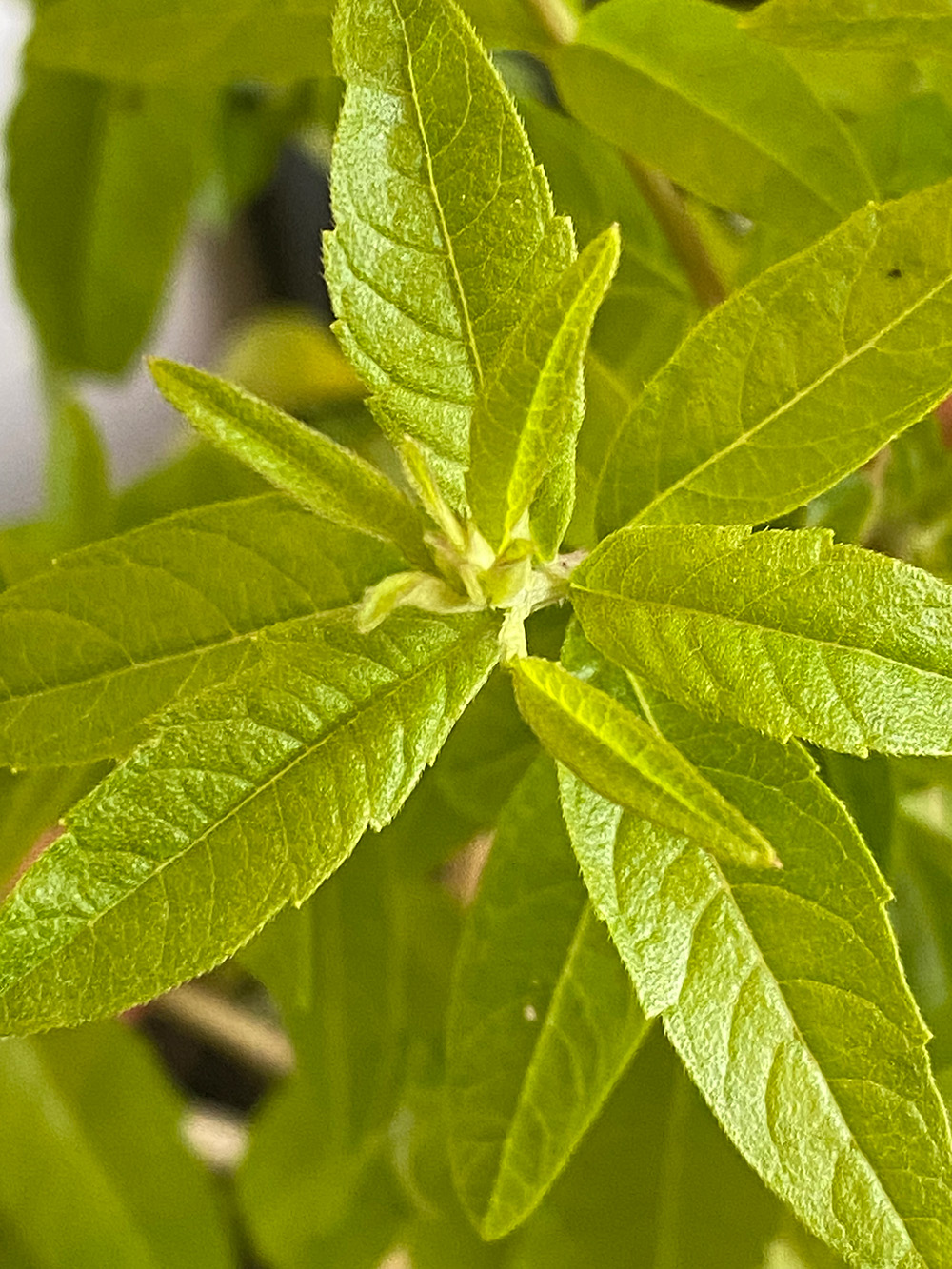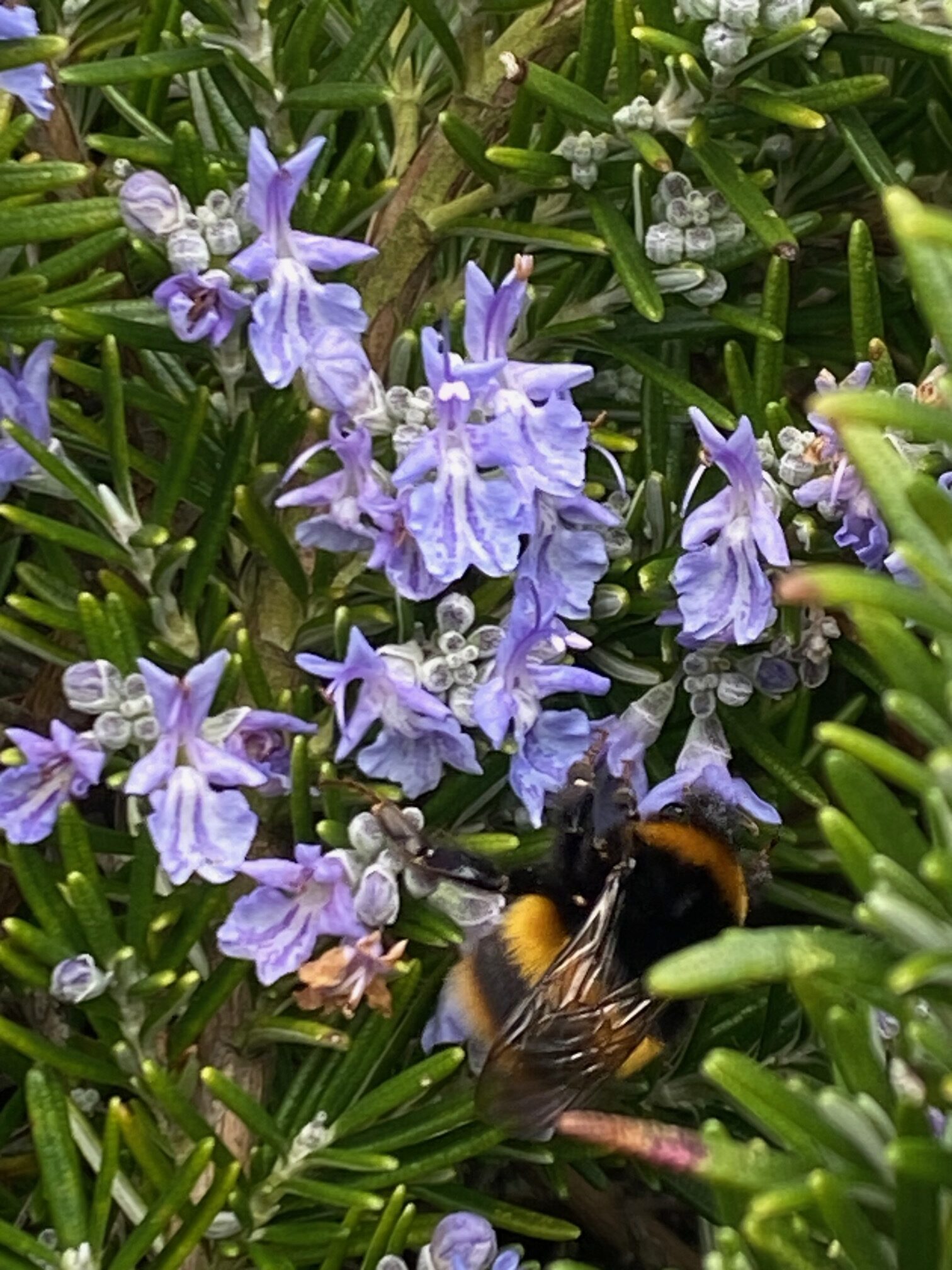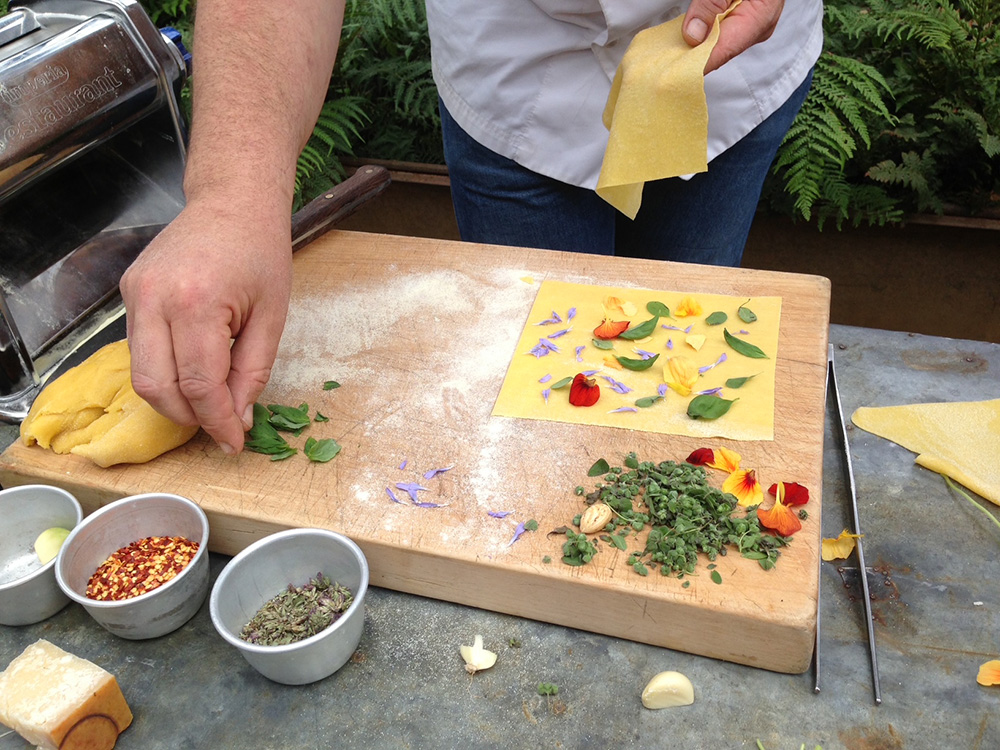Jean Vernon shares her favourite herbs for easy and tasty summer recipes.

I often think herbs are underrated. Herbs are the top pick of the plants in so many ways. Infused with essential oils, these power plants are royalty in the garden plant hierarchy. And that’s because they have so many practical uses, from making bath and beauty scrubs, to adding intense flavours to our foods. Not forgetting their powerful medicinal properties and indeed their vital role in feeding our pollinators too.
If you are new to growing plants, herbs are great place to start. Some are easier than others, but they are all worthy of your time and effort. Once you’ve made a success of growing one or two types of herbs you will soon be looking for more ideas of what to grow and how to use them.
From a culinary point of view herbs can elevate a simple meal or drink into something much more special. Grow them organically for the healthiest ingredients and learn about their story, where they originate from to replicate those conditions as you grow. Soon you will grow a connection with each of your plants and begin to regard them as more than ingredients. Allow them to lift your spirits, elevate your mood and infuse your menus with their intense flavours.
Chives

I love growing chives. These oniony leaves are so useful in the kitchen, the plants make a great low border around a raised bed, and the rich pink flowers are pretty, edible but also rich in nectar for pollinators. You can grow chives from seed, or if you know someone with a healthy clump you could ask them to divide it in the autumn so you can grow your own, or buy a pot of ready grown chives from the garden centre or the supermarket and pot them up. Chives will transform a summer salad, chop the leaves and mix into the salad leaves. Add chopped chives to omelettes and potato dishes. Or make some garlic butter and add a generous portion of chopped chives to add colour and flavour. You can freeze your butter by forming it into a roll and then cutting it into portions and dividing these with greaseproof paper. Then use a segment at a time to infuse the flavour into your menus.
Lemon Verbena

I can’t begin to tell you how wonderful lemon verbena smells. It’s beyond breath-taking. The leaves are so fragrant and powerful, that even a tiny amount can make a magical transformation to the flavour of your edibles. You can infuse the leaves in cream and then use the cream to make ice-cream. Add them to yoghurt or a fruit salad or even to jam (as you make it). Add leaves to a lemon drizzle cake or to the icing. You can make lemon verbena tea, but my favourite way to use the leaves is to make a cordial or syrup and then add this to a gin and tonic. Just WOW! All you do is add a cup of sugar to a cup of water and bring slowly to the boil. Add your lemon verbena leaves and gently simmer for about ten minutes. Allow them to steep in the syrup, then strain and bottle into sterilised bottles. Add the cooled syrup to your summer drinks. It’s delicious.
Lemon verbena is not fully hardy and needs overwintering in a cool greenhouse, or somewhere frost free. It dies back to a woody framework in winter when you may think it has died and then in spring it starts shooting from the woody stems.
Rosemary

If I had to choose one herb to grow it would be rosemary. It’s a small shrub so not always suitable for growing in containers unless they are terracotta and big enough to allow it to establish and this also cuts down on the need to repot. Rosemary hails from hotter climes, which is why a terracotta pot is a good choice as it absorbs the warmth from the sun and then transfers this to the soil in the pot keeping the roots dry and warm. It is essential to ensure that your rosemary plant does not sit in water, that the roots do not get waterlogged and that you plant is in a well-drained sunny position, remembering at all times the type of conditions it would grow in in its natural environment (think Mediterranean).
There are many forms of rosemary, some grow prostrate (more horizontal) while others are more upright. Some will grow to 2-3m round. But as you harvest the stem tips regularly you can keep its growth in check.
I love to pinch out the growing tips and add them to a cup of freshly boiled water. Rosemary tea is refreshing and has a clean, clear herby flavour. You can even add one or two nectar rich flowers to sweeten it if needed. Try it, it’s just lovely.
Mint

Gardeners often shy away from growing mint because it can take over a border very quickly, spreading widely through the planting. But if you grow the mint in a large pot and divide it yearly into new pots it will thrive and you will have a constant supply of tasty shoots and leaves. I am always amazed at the incredibly variety and diversity of types of mint. Who knew there was chocolate mint or pineapple mint? Plants are amazing. Mint plants flower too so be sure to leave a third of the shoots to flower for your short-tongued pollinators. The flowers are rich in nectar and popular with hoverflies.
Everyone knows you can make mint tea. But you can also make ice-cubes using mint to add to summer drinks, or mint sauce to eat with pineapple which is a delicious combination. Try it with pineapple mint too. Or why not coat mint leaves with melted chocolate and make your own chocolate mints for after dinner. Use dark chocolate for a real taste sensation.
Mixed herbs

If you’ve got a variety of herbs growing in your garden then harvest the edible leaves and use them as a base for a summer salad. You won’t need much else to pad it out and the small herb leaves will pack a big punch in terms of flavour. Think about those little bags of salad that we buy in the supermarket. Honestly it wouldn’t take much to pick 250g of leaves from your garden. If I went out into my garden and greenhouse right now, I could pick fresh rocket leaves, red orach leaves, spinach chard, kale, lovage, chives and pea shoots plus lots of fresh herbs. Mixed together they make a really tasty and fresh salad or garnish to accompany a quiche or a bake.
Aim for a salad bowl twice a week picked from your garden where the emphasis is on flavour and the cost is virtually nil. Fresh from the garden and greenhouse and free from chemicals, the taste of the herbs will transform your salad bowl and infuse it with nutrients, vitamins and minerals as well as taste and texture of the leaves. Garnish with herb flowers from rosemary and chives for an additional effect and enjoy. Or if you make your own fresh pasta roll edible flowers and mixed herbs into the pasta dough before you cook it for a great look and a tasty flavour.










